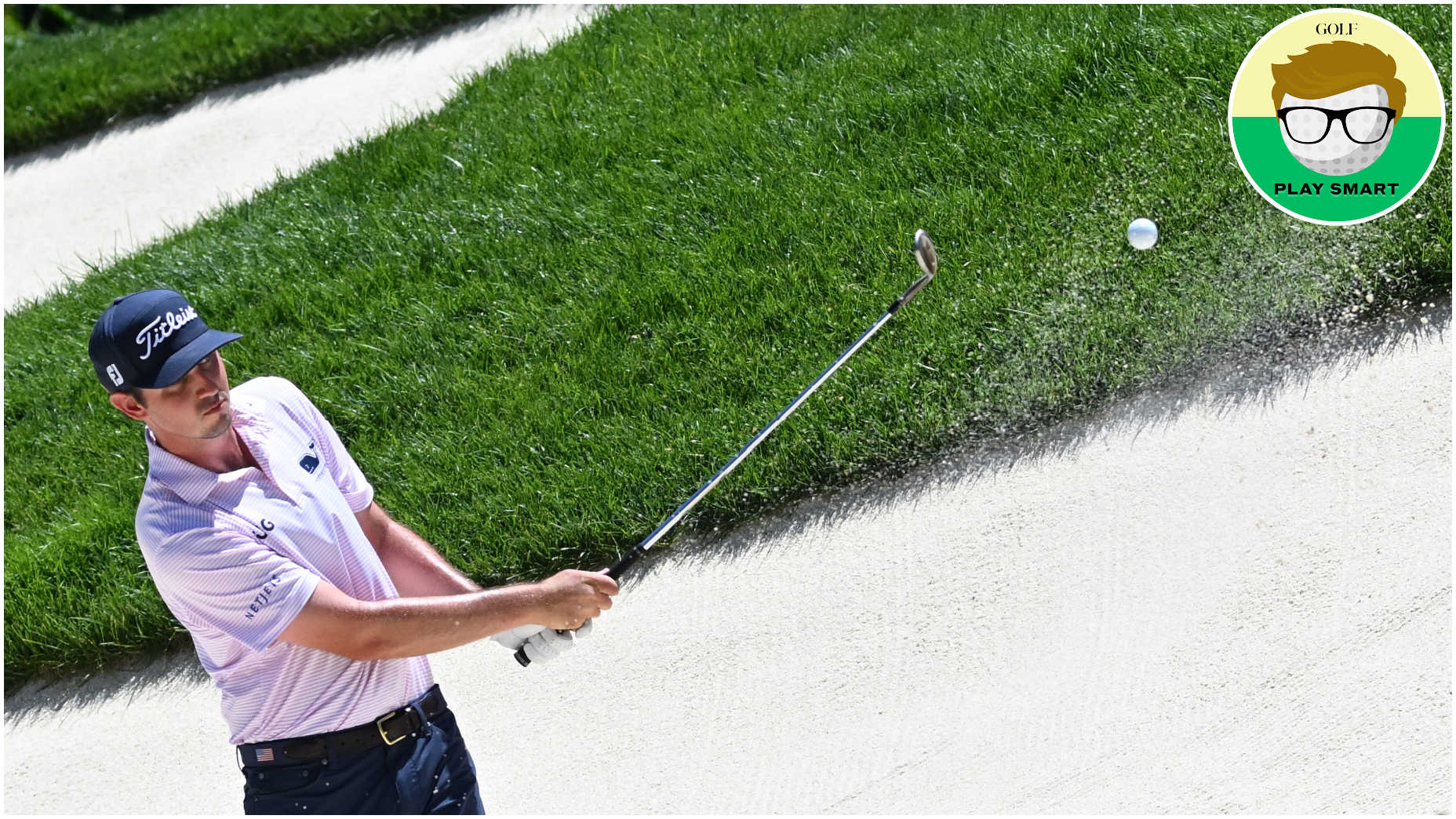Welcome to Play Smart, a game-improvement column that drops every Monday, Wednesday and Friday from Game Improvement Editor Luke Kerr-Dineen (who you can follow on Twitter right here).
Good rounds require hours — days, in the case of pros — of intense focus, astute judgement, and consistent application. And then, with one bad swing, all that hard work can vanish into nothing.
It’s perhaps the most brutal, and brilliant, thing about golf. And on Sunday we almost saw exactly that unfold at the John Deere Classic.
JT Poston was trying to become the first wire-to-wire winner at the John Deere in 30 years. Things were going smoothly for the 18, 36 and 54-hole leader after birdying his first three holes. But then on the fifth hole, he hit some turbulence. A three-putt bogey on the fifth, leading to potentially momentum-shifting mistake on the sixth.
Standing just 138 yards from the pin in the middle of the fairway, Poston expected the wind, coming off his right, to push his ball back towards the middle of the green. The wind he judged for never came, and it left his ball in the worst possible spot: Short-sided in a bunker.
“I hit it exactly how I wanted, just didn’t get the help with the wind that we were expecting,” he said. “That was a bad place to miss it.”
A chip and two putts later meant Poston had his second-consecutive bogey.
Rattled heading into his next hole, with his lead down to one, he made the same mistake on the par-3 seventh hole: He missed long left and short-sided himself to a a back left pin position. That’s when the nerves started bubbling up.
“Giving a few back immediately and the lead getting down to one was a little bit; I don’t want to say jarring, but it got my attention,” Poston said.
When pros talk about things like the wind, and how it’ll affect their approach shots, it’s all a means to an end for one thing: Hitting the green, sure, but first-and foremost, not leaving themselves short-sided.
Short-sided — so named for when you miss the green on the same side the hole is located, therefore leaving yourself on the “short” side of the green — is golf’s equivalent of an unforced error. Outside of hitting your ball into a penalty, it’s perhaps the worst mistake golfers can make.
Why short-siding is so bad
When golfers short-side themselves it means, quite simply, they’re in a spot with less room for error. They’re often in the rough, and having less green to work with means they need to float the ball higher into the air to stop it quickly. Flop shots like those are difficult to judge and the technique is harder to execute. It’s why missing on the short side can carry with it an effective penalty of between half a shot, to almost an entire shot, from the rest of the field.
It’s something we see in Poston’s numbers from Sunday, too.
Poston’s mistakes on those two holes were so damaging that he lost 1.09 shots to the field in the space of two shots — one from the middle of the fairway, and the other from a tee box. In just two swings, Poston gave back about half of the statistical advantage he gained opening with three birdies in three holes.
It’s why pros are obsessed with figuring out where they can’t miss when approaching the green, and working their strategy backwards from there. That means playing to middle of greens, and clubbing up when the pin is in the front of the green. Anything but short-sided, and you can’t go too far wrong.
With the nerves flurrying, Poston pulled off the low-percentage shot right at the moment he needed to: He flopped his ball to just over eight feet from the short-side of the seventh green, and made the putt.
It wasn’t the spot he would’ve chosen, but it’s the one he found himself in. And he responded with the kind of shot that wins golf tournaments.
“The up and down settled us down,” he said. “The mental reset for me was saving par on seven and kind of settling the nerves a little bit.”
As brutal as golf can be, threatening to unravel three days worth of good work from Poston in two swings, that’s also the beauty of it. More often than not, you’ll get your chance to make amends. And that’s exactly what Poston did on Sunday.
